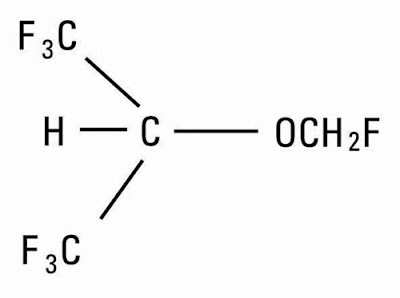Enrofloxacin: An Important Antibacterial Drug
 |
| Enrofloxacin |
Enrofloxacin is a broad-spectrum fluoroquinolone antibacterial drug used for the treatment of various bacterial infections in animals. Discovered by scientists at Bayer AG in the 1980s, enrofloxacin revolutionized veterinary medicine by providing effective treatment against both gram-positive and gram-negative bacteria.
Mechanism of Action
Enrofloxacin works by inhibiting the bacterial enzymes DNA gyrase and
topoisomerase IV, which are required for DNA replication, transcription, repair
and recombination. DNA gyrase is an enzyme that regulates the overcoiling or
undercoiling of DNA during replication and transcription. Topoisomerase IV
resolves knots and tangles that arise during the separation of daughter strands
of DNA during cell division. By blocking the action of these two enzymes,
enrofloxacin prevents DNA replication and transcription and ultimately leads to
bacterial cell death. This mechanism of action gives enrofloxacin activity
against a wide range of both gram-positive and gram-negative bacteria.
Approved Veterinary Uses
Enrofloxacin
is approved for veterinary use in many countries to treat bacterial infections
in pets and food-producing animals. In pets like dogs and cats, it is commonly
used to treat respiratory infections caused by bacteria like Streptococcus
zooepidemicus, skin infections caused by Staphylococcus intermedius and urinary
tract infections caused by Escherichia coli. In food animals like cattle, pigs
and poultry, enrofloxacin is used to effectively treat respiratory diseases,
enteric infections, metritis and mastitis. Some of the common bacterial
diseases treated with enrofloxacin in food animals include mastitis in dairy
cows caused by Staphylococcus aureus, swine respiratory disease complex caused
by Pasteurella multocida and colibacillosis in poultry.
Dosage and Administration
The dosage of enrofloxacin depends on the animal species, nature and severity
of infection. For pets, the recommended dosage is 5-10 mg/kg body weight orally
or subcutaneously once daily. For cattle, the dosage is 1.0-2.2 mg/kg body
weight with the maximum dose of 11.1 mg/kg. In pigs, the dosage is 2.5-5.0
mg/kg body weight orally or intramuscularly once daily. For poultry,
enrofloxacin is administered orally through drinking water at 200-400 mg/liter.
The recommended treatment duration is usually 7-14 days depending on the
response. Proper dosage and treatment compliance is important to achieve
optimal therapeutic response and prevent development of bacterial resistance.
Safety and Side Effects
Like all antibiotics, enrofloxacin too can cause some side effects in animals
if not used judiciously. The common adverse effects reported include
gastrointestinal disturbances like vomiting and diarrhea. Other possible side
effects include loss of appetite, lethargy, behavioral changes and
hyperexcitability in some animals. Enrofloxacin should be used with caution in
young animals and pregnancy as it may affect bone and cartilage development.
Long term use is associated with increased risk of retinal degeneration in
dogs. Proper withdrawal periods should be followed before slaughter to avoid
drug residues in meat. Overall, when used as directed under veterinary
supervision, enrofloxacin is relatively safe and well-tolerated in animals. However,
overdosage and misuse can amplify the risk of side effects.
Threat of Antimicrobial Resistance
The indiscriminate and widespread use of antibiotics like enrofloxacin in food
animal production has raised public health concerns about antibiotic resistance.
The administration of non-therapeutic doses of antibiotics as growth promoters
and the overuse of antibiotics to prevent diseases provide selective
evolutionary pressure that drives the emergence of antimicrobial resistant
bacteria. Such resistant bacteria can spread from food animals to people
through direct contact or via the food chain. This poses a serious threat to
human medicine as many important antibiotics may become ineffective to treat
infections. Strict regulations are enforced worldwide on prudent and
responsible use of antibiotics like enrofloxacin only for therapeutic purposes
in animals to curb the emergence and spread of resistant pathogens.
Alternatives to antibiotic growth promoters are also being explored to preserve
existing antimicrobial drugs for future generations.
Get More Insights on Enrofloxacin



Comments
Post a Comment